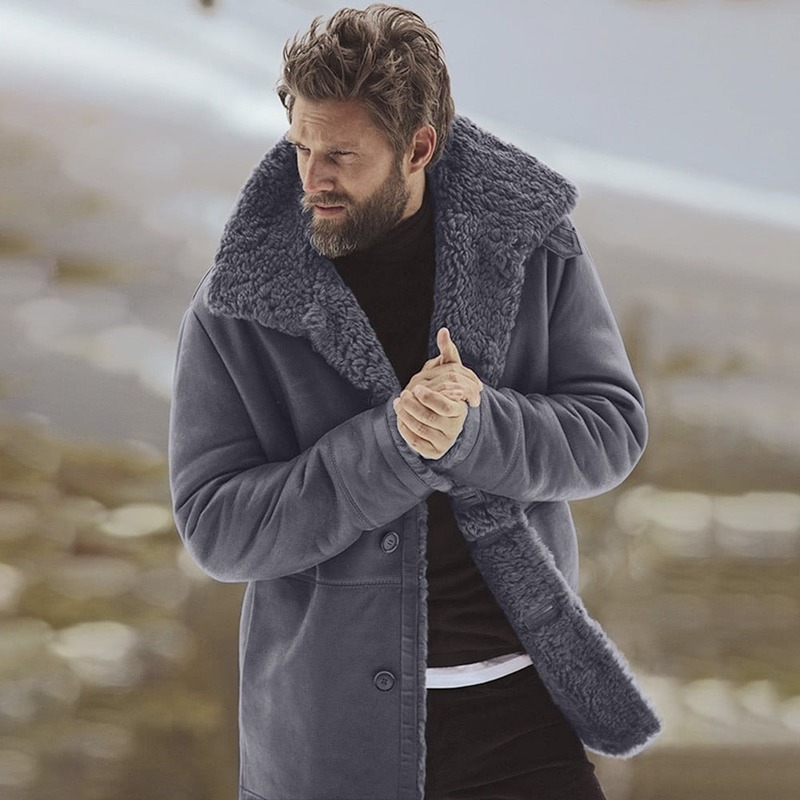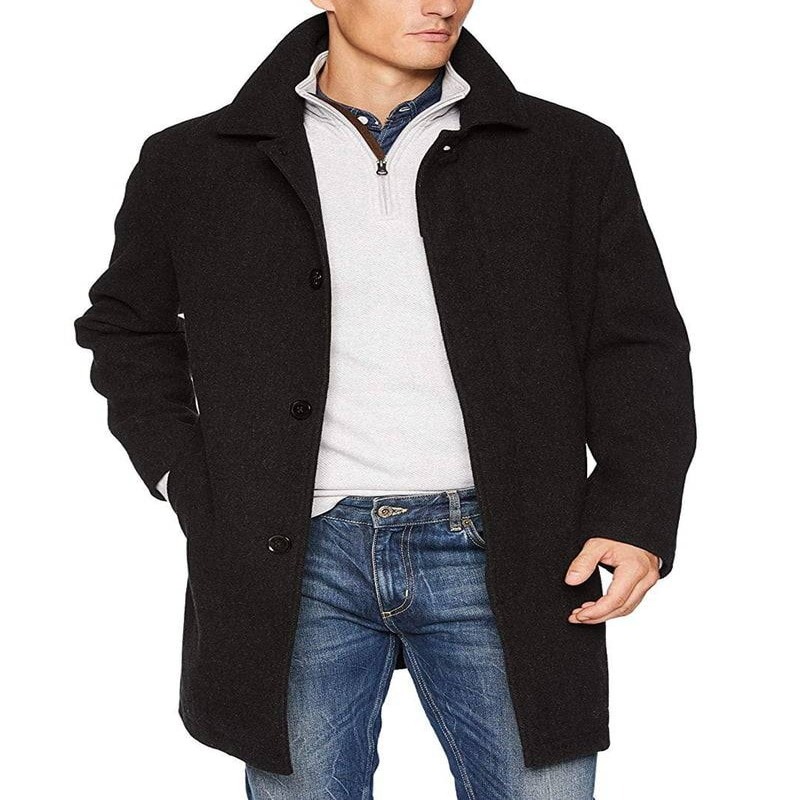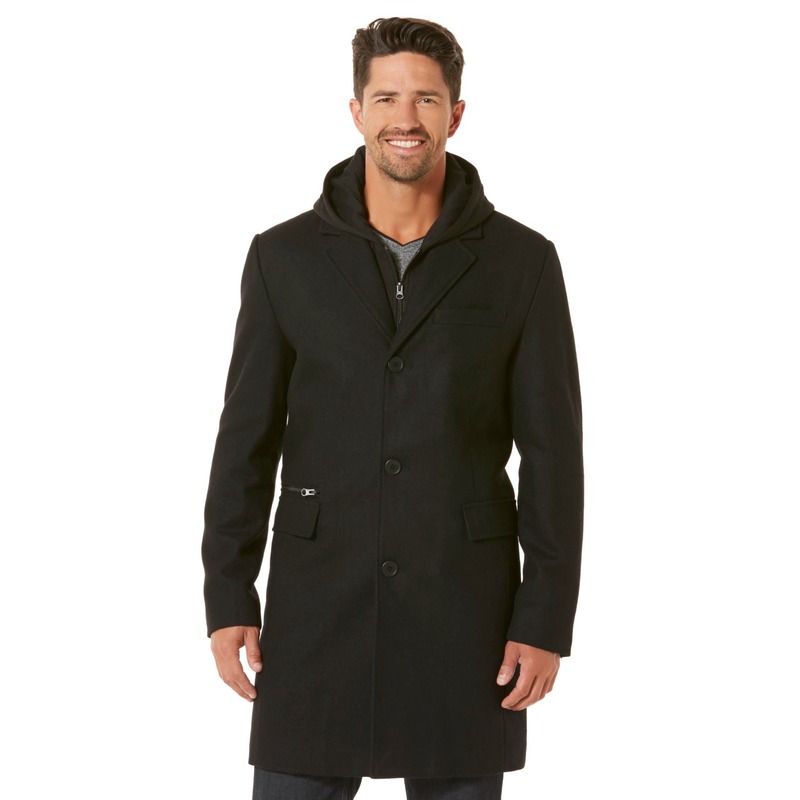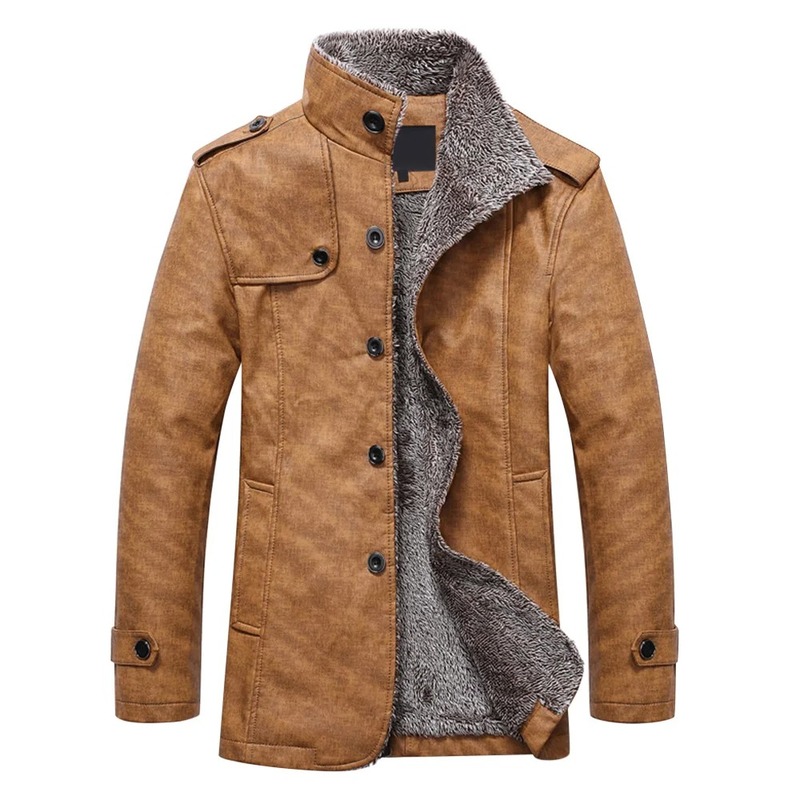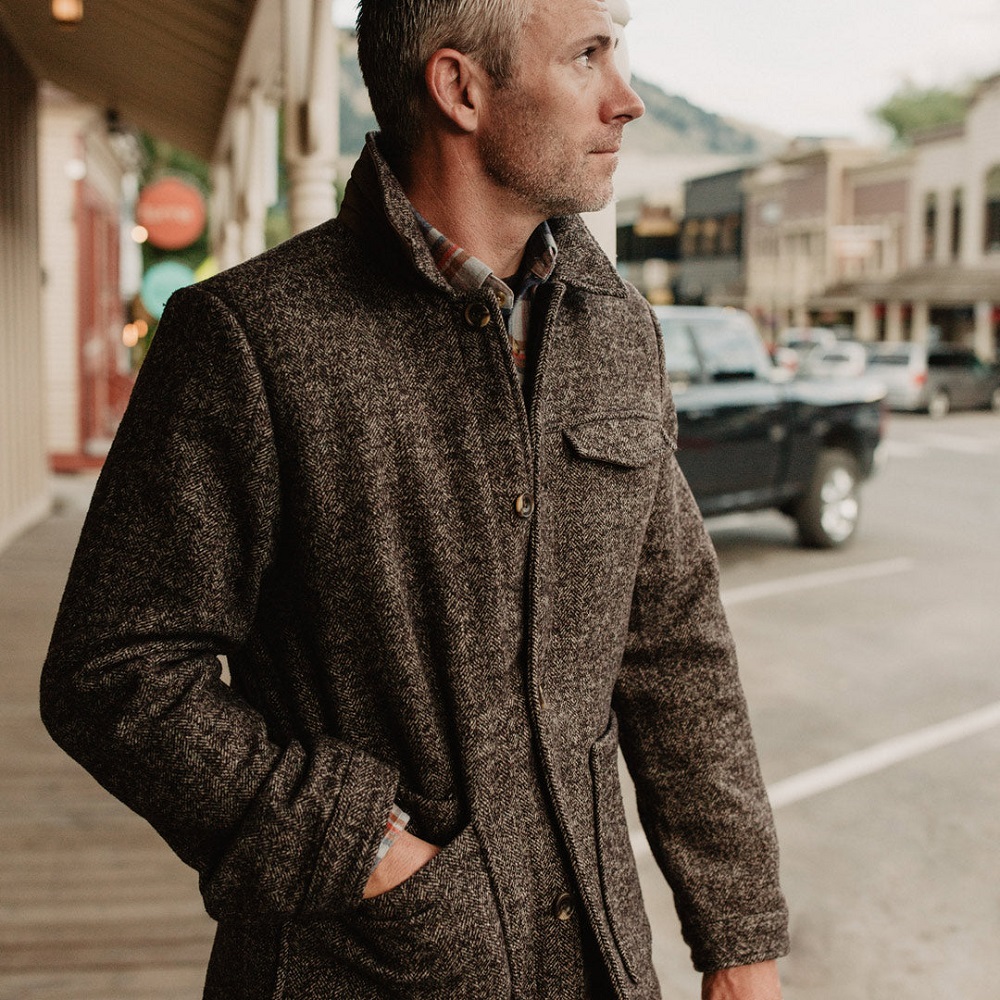
Wool coats are timeless staples that not only provide warmth but also add an element of style to winter wardrobes. The right wool coat can enhance your outfit while ensuring you stay comfortable during the cold months. Choosing the perfect wool coat can be daunting, but with a little guidance, you can find the ideal piece to meet your needs. Here are some tips to help you select the perfect wool coat for winter wear.
Benefits of Owning a Wool Coat
Why Wool is a Great Material for Outerwear
Wool is a natural and durable material. It provides excellent insulation, keeping you warm in cold weather. Wool is breathable, regulating your body temperature effectively. It resists moisture, making it perfect for unpredictable weather conditions. This material is also known for its ability to maintain shape and resist wrinkles. Additionally, wool is long-lasting and ideal for daily use. Its high-quality feel makes it a favorite for stylish outerwear.
Comparing Wool Coats to Other Winter Fabrics
Wool coats offer unique advantages over other fabrics. Unlike synthetic materials, wool is eco-friendly and biodegradable. Wool is more insulating than cotton, keeping you warmer in freezing temperatures. Compared to polyester, wool allows better breathability, reducing overheating. Wool coats also resist wear and tear more effectively than many blends or synthetics. While down jackets are warm, wool coats are more versatile and suitable for both casual and formal settings. Wool provides unmatched elegance and functionality, making it a top choice for winter outerwear.
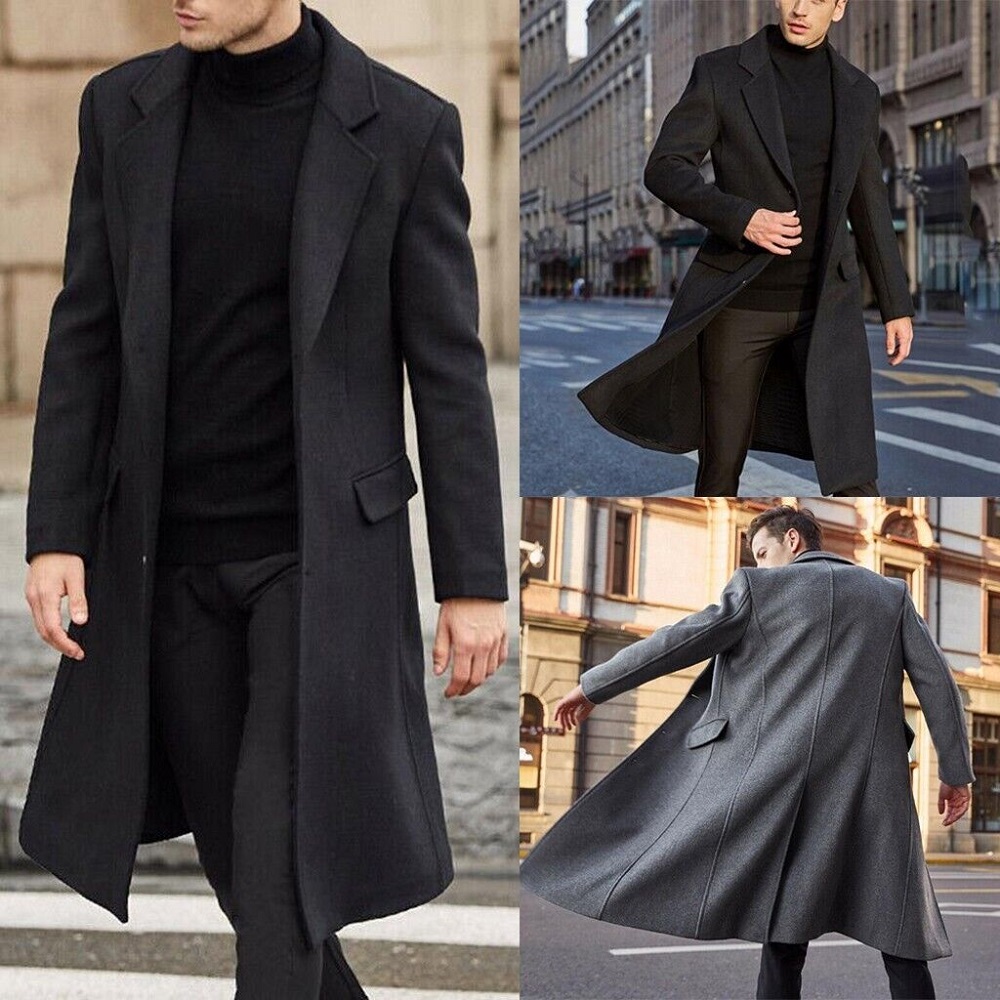
Types of Coats to Consider
Wool coats come in a variety of styles and materials. Each has its own appeal and functionality. Knowing your options is key to finding the perfect wool coat. Here, we explore two important categories: coat styles and wool blends.
Single-Breasted vs. Double-Breasted Styles
Single-breasted and double-breasted wool coats are two popular choices. Each style has distinct characteristics.
- Single-breasted wool coats: These coats have one row of buttons, creating a minimal look. They are versatile and work well for both casual and formal settings. Single-breasted styles suit most body types, providing a sleek, slim appearance.
- Double-breasted wool coats: These coats feature two parallel rows of buttons. They offer a structured and classic design. Double-breasted styles provide more warmth and are ideal for colder climates. They are often considered more formal than single-breasted options and make a bold fashion statement.
Different Wool Blends and Their Properties
Wool coats often blend wool with other materials to enhance durability, texture, or comfort. Here are some common blends:
- Pure wool: Made entirely from wool, these coats offer superior warmth and natural breathability. They are durable and retain their shape well.
- Wool-cashmere blends: Cashmere adds softness and luxury to wool coats. These blends provide a refined texture and extra warmth.
- Wool-polyester blends: Adding polyester increases strength and reduces the coat’s weight. These coats resist wrinkles and are more affordable.
- Wool-nylon blends: Nylon boosts stretch and durability while maintaining warmth. These blends work well for more active lifestyles.
Choosing the right wool coat involves understanding both style and material. Evaluate your needs to make the best decision.
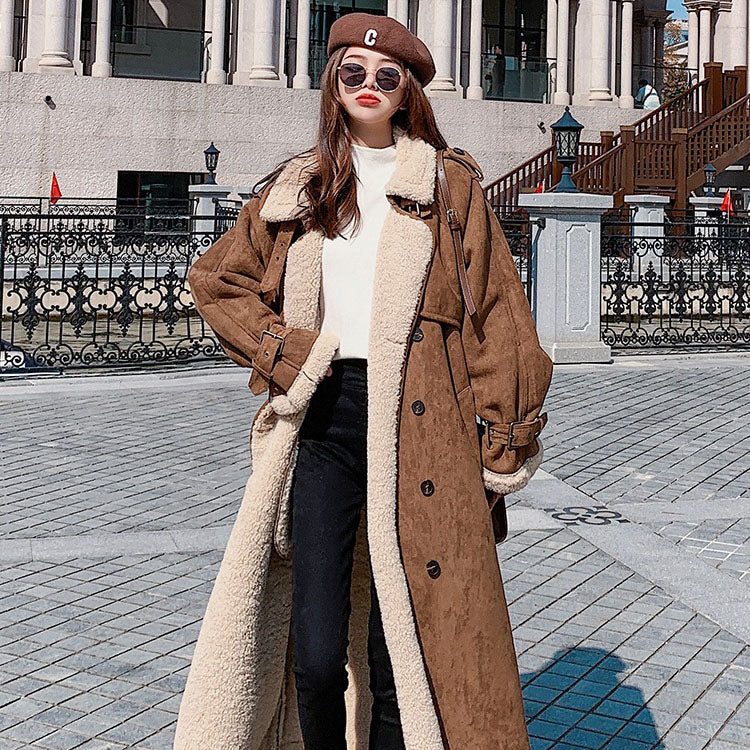
Choosing the Right Fit for Your Body Type
A well-fitting wool coat can enhance your appearance and provide comfort. It’s important to consider measurements and styles that complement your body shape. Below, we focus on two aspects: measuring for an accurate fit and selecting appropriate cuts and lengths.
How to Measure for a Perfect Fit
Measuring correctly ensures the wool coat sits comfortably and flatters your body. Follow these steps to achieve the best results:
- Measure your chest: Wrap a measuring tape around the fullest part of your chest. Ensure it stays level.
- Measure your shoulders: Place the tape across the widest part of your shoulders for accurate fit details.
- Check sleeve length: Start from the shoulder’s top and measure down to your wrist bone.
- Determine coat length: Measure from the back of your neck to where you want the coat to end.
Having precise measurements helps avoid buying a wool coat that’s too loose or tight. For assistance, visit a tailor or store equipped with fitting services.
Best Cuts and Lengths for Different Body Shapes
Selecting the right wool coat style can complement your body shape. These guidelines will help you pick the perfect cut and length:
- For petite bodies: Choose shorter coats, such as hip-length or cropped styles. These add proportion and avoid overwhelming your frame.
- For tall figures: Opt for long wool coats like knee-length or below-the-knee styles. They enhance elegance.
- For curvy shapes: Look for A-line or belted wool coats to accentuate your waist and flatter your curves.
- For slim builds: Structured or padded coats add dimension, while double-breasted designs create volume.
Matching cuts and lengths to your body shape ensures both style and functionality. Try different options to find the coat that suits you best.
Key Features to Look for in a Coat
Choosing the right wool coat goes beyond style and fit. Key features like material quality, insulation, and design details greatly impact both functionality and appeal. Here, we break down essential factors to consider when shopping for your perfect wool coat.
Material Quality and Thickness
High-quality wool ensures durability and comfort. Check for these characteristics when evaluating material:
- Wool grade: Look for luxurious options like merino wool or cashmere blends for softness.
- Thickness: Thicker wool provides better warmth, making it suitable for colder climates. Lighter materials may be better for mild winters.
- Feel and texture: The coat should feel smooth, not itchy, against your skin.
Opt for premium materials to enjoy both comfort and long-lasting wear from your wool coat.
Insulation and Lining Options
Proper insulation and lining enhance a wool coat’s warmth and overall functionality:
- Thermal lining: Lightweight yet insulating linings, like quilted or padded layers, retain heat effectively.
- Natural insulation: Linings made from cotton or silk improve breathability and reduce static.
- Moisture resistance: Some wool coats come with treated linings for added water resistance.
Check if the coat’s lining complements your weather conditions. Insulated linings are crucial for cold or windy environments.
Button Styles, Pockets, and Other Details
Small design elements make a big difference in a wool coat’s utility and appearance:
- Buttons: Choose classic button styles for a timeless look or hidden buttons for a minimalist touch.
- Pockets: Verify the number and depth of pockets for practical storage.
- Collars and lapels: Wide collars add warmth and style, while thinner lapels offer a modern look.
These features enhance both functionality and elegance, making your wool coat more versatile.
When shopping for a wool coat, prioritize material quality, insulation, and practical details. These elements ensure your coat offers comfort, style, and durability for years to come.
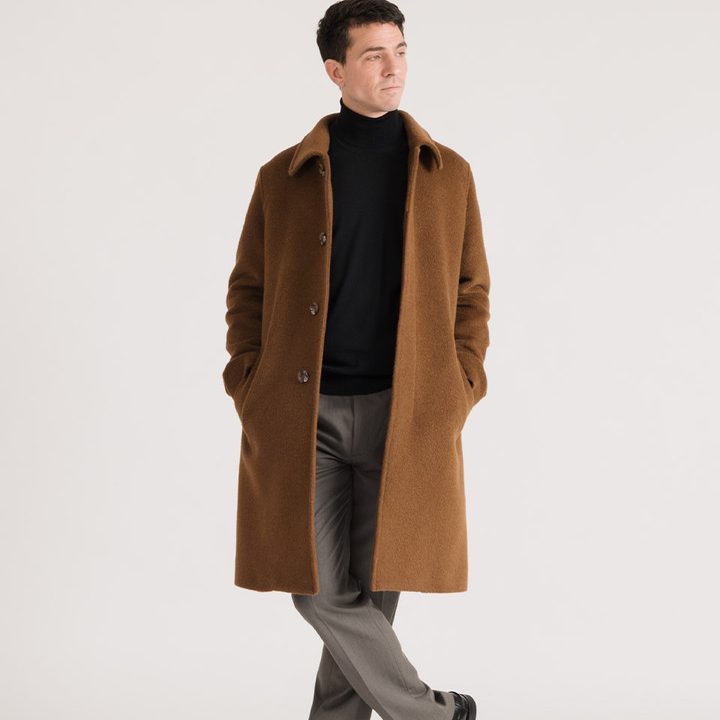
Styling Tips for Your Coat
A wool coat is versatile and can elevate any outfit, casual or formal. The right styling enhances your look, making it both trendy and functional. Below are essential tips for pairing your wool coat with accessories for casual outings and formal occasions.
Pairing with Accessories for Casual Looks
To create a relaxed and stylish appearance, consider these accessory tips:
- Scarves: Add a chunky knit or patterned scarf for warmth and texture.
- Hats: Pair with a beanie or beret for a cozy and playful vibe.
- Footwear: Choose ankle boots or sneakers for a casual touch.
- Bags: Opt for a leather crossbody bag or a canvas tote to keep it simple.
- Jeans and sweaters: Wear slim-fit jeans and neutral sweaters underneath for a balanced, casual outfit.
Accessories can transform your wool coat into the perfect piece for relaxed outings. Mix and match these items to suit your personal style.
Elevating Your Outfit with Formal Combinations
For formal occasions, your wool coat can enhance elegance and sophistication. Follow these styling tips:
- Gloves: Choose leather gloves for a polished and refined look.
- Footwear: Wear pointed-toe heels or sleek dress shoes to complement the formal vibe.
- Ties and scarves: Add a silk scarf or tie for added luxury.
- Jewelry: Go for minimal, elegant jewelry like pearl earrings or a wristwatch.
- Tailored suits or dresses: Pair the coat with tailored pieces underneath for a seamless combination.
When styled correctly, your wool coat becomes ideal for work events, weddings, and other formal scenarios. Prioritize accessories that add sophistication to keep your look sharp and classy.
Styling your wool coat with the right items ensures it becomes a centerpiece in your wardrobe. Whether dressing up or down, creativity and balance are key to nailing the perfect outfit.
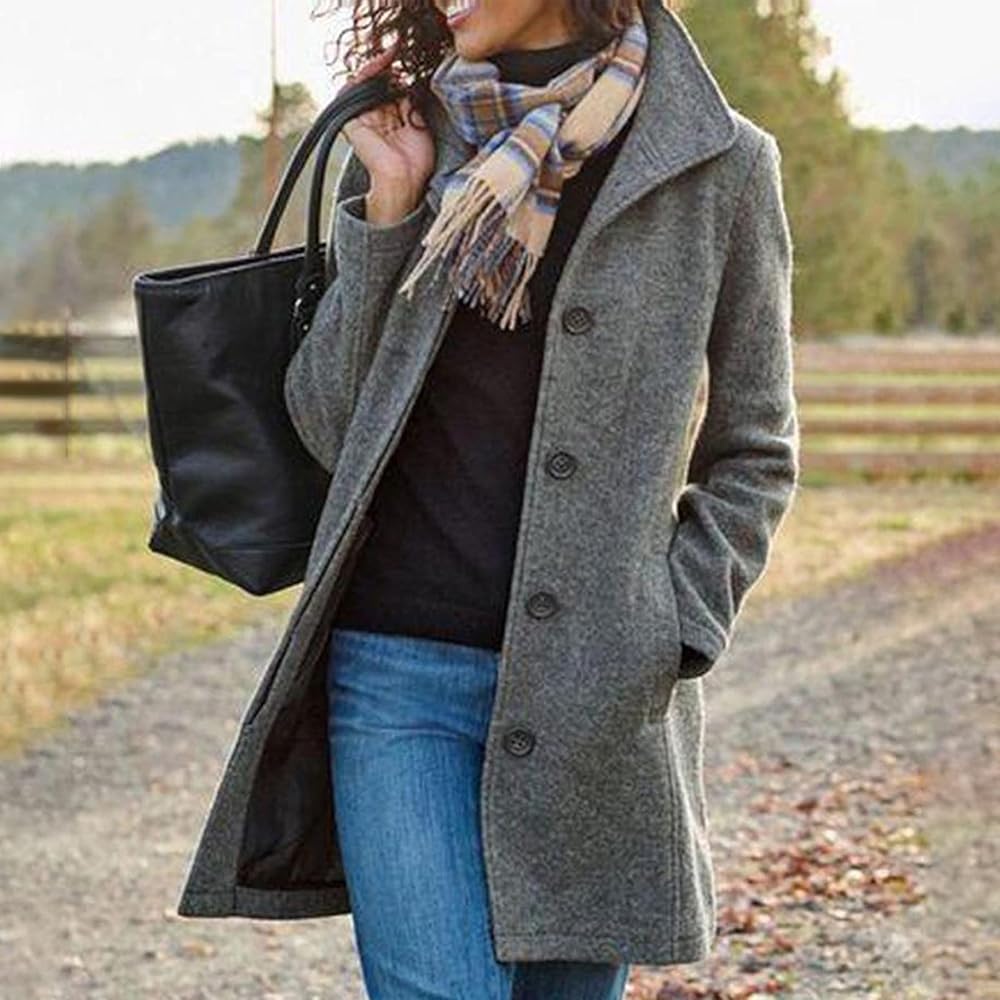
Caring for Your Wool Coat
Proper care ensures your wool coat remains stylish and durable for years. Learn key tips to clean and store your coat effectively.
Cleaning and Maintenance Tips
Maintaining a wool coat’s appearance involves regular cleaning and proper handling:
- Spot cleaning: Remove stains quickly using mild detergent and cold water.
- Dry cleaning: Use professional dry-cleaning services for deep cleaning every season.
- Brush regularly: Use a fabric brush to remove dirt and lint from the coat’s surface.
- Avoid over-washing: Frequent cleaning can weaken wool fibers; clean it only when necessary.
- Steam to remove wrinkles: Use a handheld steamer to smooth wrinkles without damaging the fabric.
These steps protect your wool coat’s texture and keep it looking new.
Storing Your Wool Coat Properly
Proper storage prevents damage and preserves your wool coat’s form:
- Hang on sturdy hangers: Avoid wire hangers; use padded or wide wooden hangers to maintain shape.
- Keep in breathable bags: Store coats in cloth garment bags, avoiding plastic to prevent moisture buildup.
- Avoid crowded spaces: Give your coat enough room to prevent creases and compression.
- Protect from moths: Use cedar blocks or lavender sachets to deter moths and insects.
- Store in a cool, dry area: Keep away from direct sunlight or damp environments.
Follow these storage tips to extend the lifespan of your wool coat and ensure it looks fresh every season.
Buying Tips for Your Coat
Selecting the perfect wool coat involves smart planning and knowing where to shop. Consider these tips to make your shopping experience easier and more satisfying.
Setting a Budget and Finding Sales
Creating a budget helps narrow your options. Decide how much you’re willing to spend.
- Plan during sales: Watch for seasonal discounts, especially during Black Friday or year-end sales.
- Sign up for alerts: Subscribe to your favorite store’s newsletters for exclusive deals and promotions.
- Compare prices: Check multiple retailers to find the best offer within your budget.
- Consider outlets and clearance sections: These often offer high-quality wool coats at reduced prices.
Setting a clear budget and timing your purchase can lead to significant savings.
Assessing Online vs. In-Store Purchases
Decide whether to buy your wool coat online or in-store based on these factors:
- Online shopping benefits: Enjoy convenience, a wider selection, and easy price comparisons. Read reviews for insights.
- Online drawbacks: Sizing challenges and the inability to feel the material beforehand.
- In-store advantages: Try on different styles and check the coat’s fabric and fit in person.
- In-store limitations: Limited stock and the need to travel, which may cut into your time.
For the best experience, combine both methods. Start by researching online and finalizing your decision in-store, if possible.
Keep these tips in mind to ensure you find the perfect wool coat at a great value.
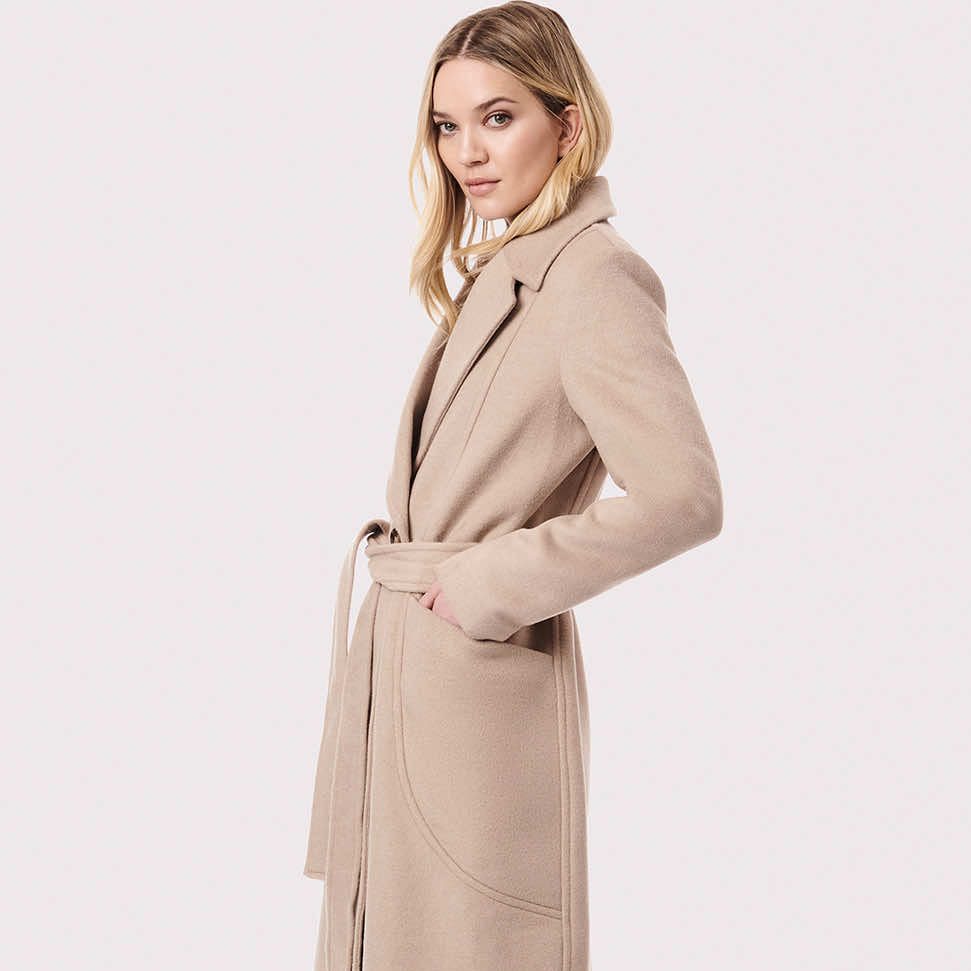
Sustainable and Ethical Wool Coat Options
When buying a wool coat, consider sustainability and ethical production. These choices benefit the planet and workers.
Importance of Ethical Sourcing
Ethical sourcing ensures fair treatment of workers and responsible wool production. Here’s why it matters:
- Animal welfare: Ethically sourced wool prioritizes humane treatment of sheep, avoiding harmful practices like mulesing.
- Fair labor: Workers in the production chain receive fair wages and safe conditions.
- Environmental impact: Sustainable wool comes from farms that minimize land degradation and water usage.
- Better quality: Ethical sourcing often ensures higher wool quality, resulting in more durable coats.
Choosing ethically made wool coats supports responsible brands and promotes environmental sustainability.
Brands Offering Sustainable Wool Coats
Several brands focus on producing ethical and sustainable wool coats. Consider the following options:
- Patagonia: Known for eco-friendly initiatives, they use recycled wool in their outerwear.
- Everlane: Offers traceable wool coats made in certified factories with fair worker practices.
- Eileen Fisher: Focuses on sustainable wool and encourages take-back programs for old coats.
- Nudie Jeans: Specializes in 100% recycled wool coats, drastically reducing waste.
- Amour Vert: Combines ethical practices and sustainable materials to create chic wool coats.
Research these brands for stylish options that align with your values.

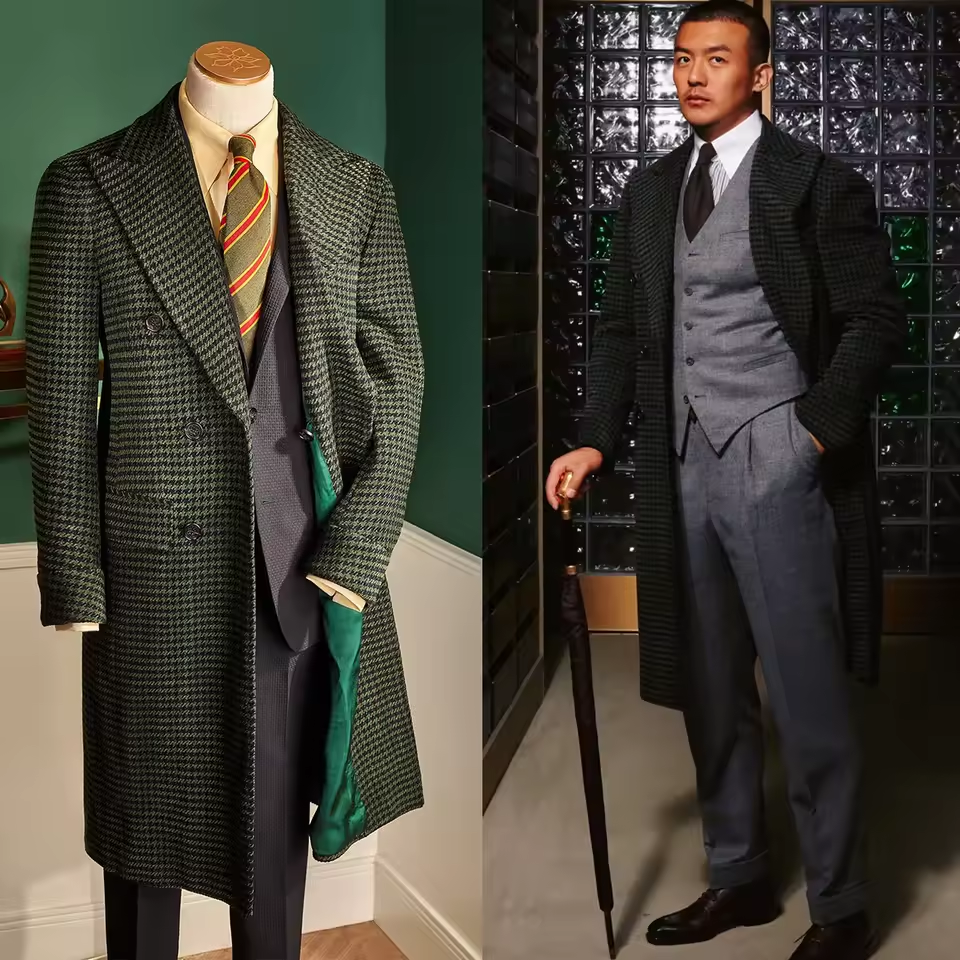
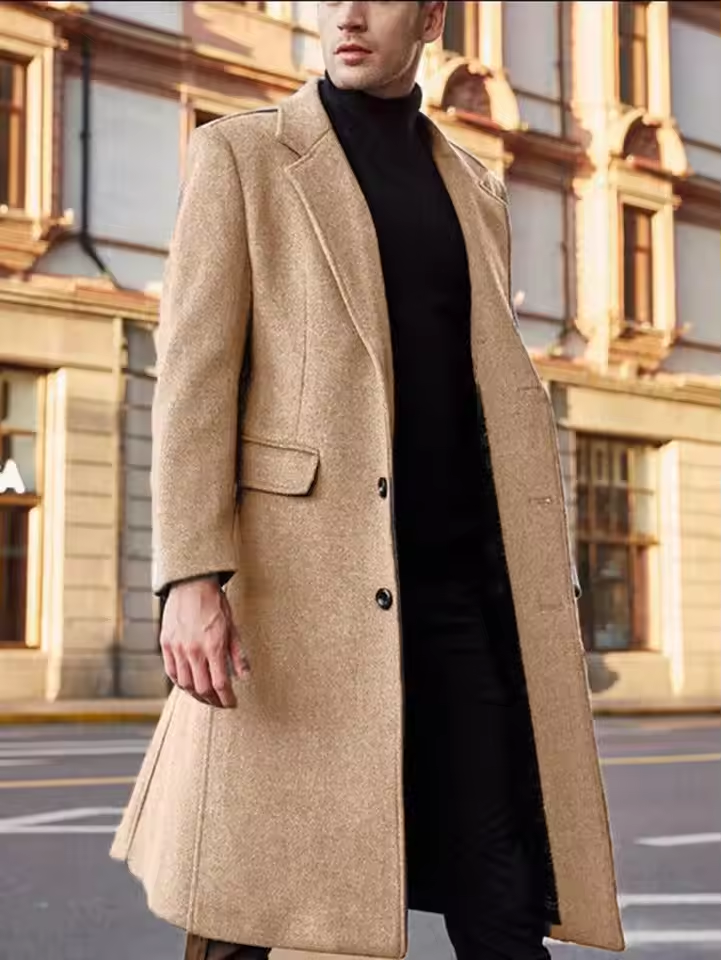
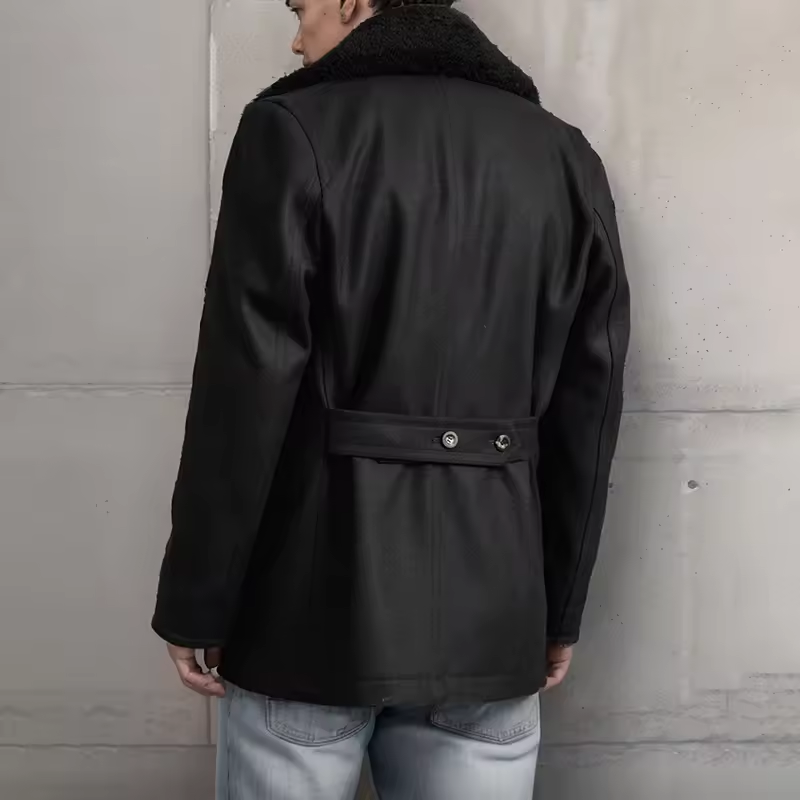 Classic and Modern Ways to Wear a Men’s Wool Coat
Classic and Modern Ways to Wear a Men’s Wool Coat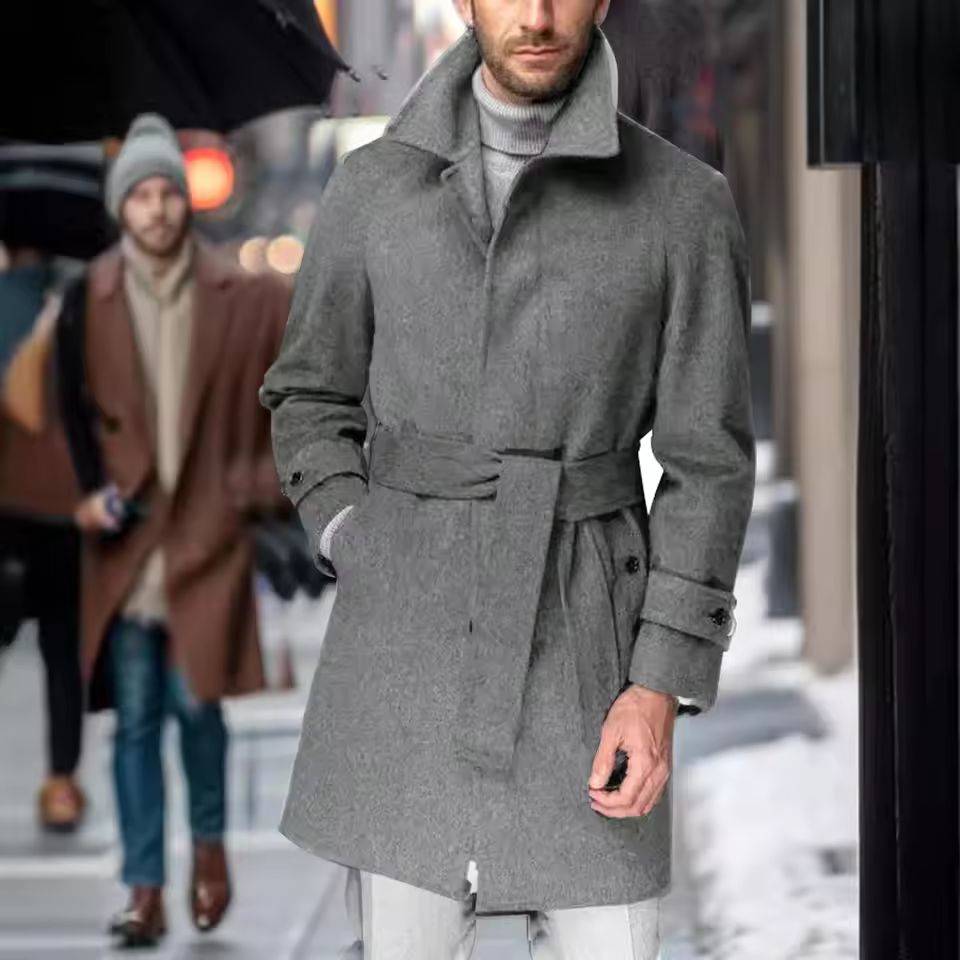 Dressing Up: Wool Coats in Formal Settings
Dressing Up: Wool Coats in Formal Settings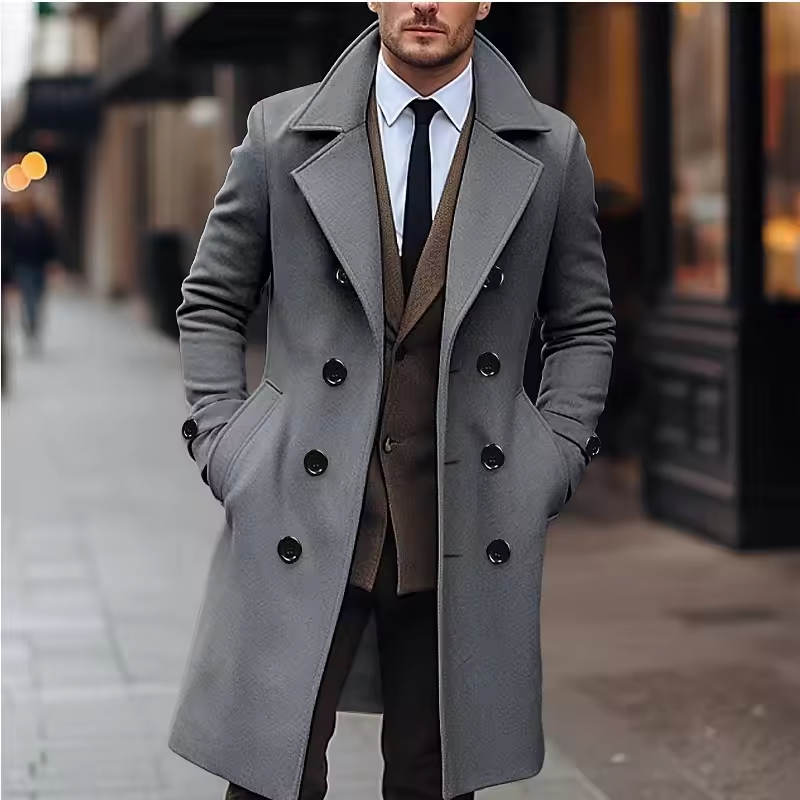 The Impact of Color: Selecting the Right Shade for Your Wool Coat
The Impact of Color: Selecting the Right Shade for Your Wool Coat